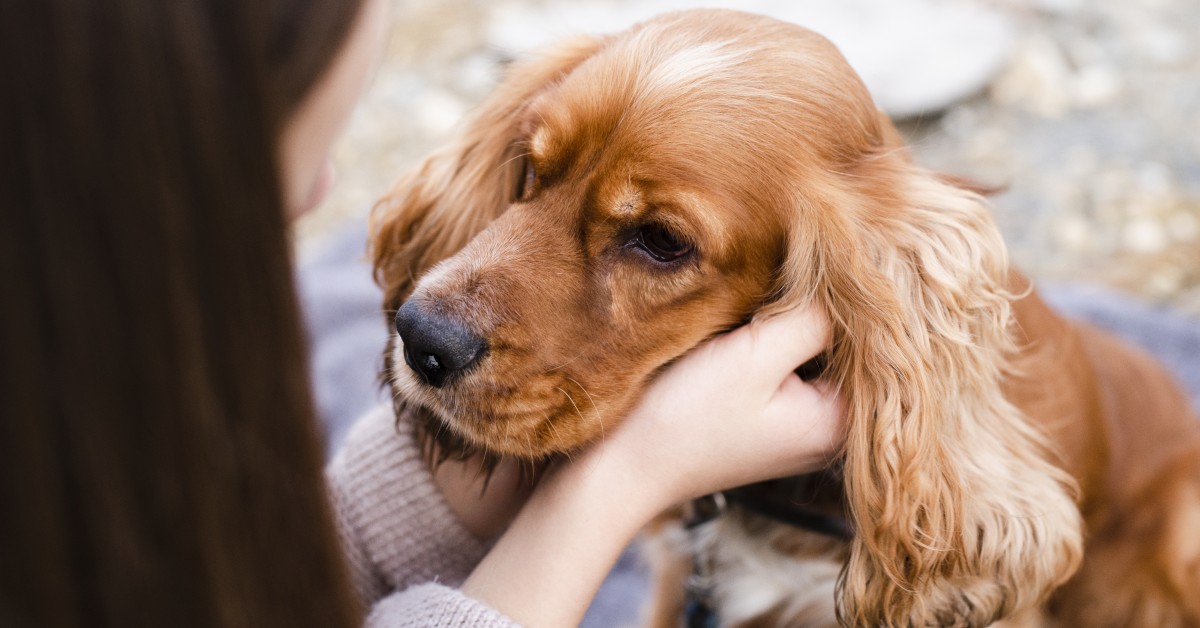Does Your Dog Have a Thyroid Disorder
A small gland called the thyroid can make a surprisingly big impact on your dog's health.

You might be surprised to learn just how complex your dog's body really is. Dogs and humans share many essential systems, including an endocrine system in which glands such as the thyroid regulate a wide range of metabolic functions. If you see changes in your dog’s appetite, appearance, energy level, or vital signs, you may have reason to suspect either hypothyroidism or hyperthyroidism. Let's examine these two kinds of canine thyroid disease, from causes and symptoms to potential treatments.
Your Dog's Thyroid Gland
The thyroid is a small, two-lobed gland located in your dog's neck. The brain's pituitary gland sends messages to the thyroid to produce the proper amounts of thyroid hormones to keep your pet's metabolism on an even keel. The most important of these hormones include triiodothyronine (T3) and thyroxine (T4).
You can think of the thyroid as your dog's internal thermostat, the device that ensures that its body generates the right amount of energy for good health. When the thyroid gland stops working correctly, one of two primary conditions can develop. If the gland produces too little thyroid hormone, your dog has hypothyroidism. Too much thyroid hormone is referred to as hyperthyroidism.
Hypothyroidism in Dogs
Unlike cats, who tend to experience hyperthyroidism more often than hypothyroidism, dogs usually develop the latter instead of the former. Hypothyroidism tends to strike in middle age, especially in certain breeds such as Rhodesian Ridgebacks, Golden Retrievers, Doberman Pinschers, Cocker Spaniels, Beagles, and Boxers.
Hypothyroidism in dogs can be a congenital problem, or it can occur when a disease destroys some of the thyroid gland tissue. Two such diseases include idiopathic thyroid gland atrophy, in which fat starts to replace the glandular tissue, and an autoimmune disorder called lymphocytic thyroiditis.
When your dog's thyroid hormone production slows down, so does your dog, and in a variety of ways. Look out for symptoms such as:
- Fatigue or malaise.
- Unexplained weight gain.
- Changes in skin or coat health.
- Changes in sexual libido or heat cycles.
- Reduction in heart rate.
- Unusual sensitivity to cold.
If your dog has the congenital form of hypothyroidism, it may also develop a swelling in its neck known as a goiter. If you notice this symptom, schedule a veterinary exam to find out what's causing it.
Hyperthyroidism in Dogs
Uncommon as it may, dogs can and do develop hyperthyroidism. The usual cause is a type of fast-growing cancer known as thyroid carcinoma. As the tumor grows on the thyroid, it stimulates an unnatural boost in hormone production, throwing your dog's metabolism into overdrive.
Hyperthyroidism can take a while to produce recognizable symptoms. When they appear, they tend to be the opposite of what you'd expect from hypothyroidism. These symptoms typically include:
- Uncharacteristic excitability.
- Elevated heart rate and other vital signs.
- Unexplained weight loss, despite a boost in appetite.
- Urinary retention.
- Excessive thirst.
- Vomiting or diarrhea.
- Swallowing trouble.
- A change in the sound of the dog's bark.
- Facial swelling and/or an obvious mass in the neck.
Both hypothyroidism and hyperthyroidism require medical treatment. If you see any signs of canine thyroid disease in your pet, schedule a veterinary appointment.
Evaluation and Diagnosis of Thyroid Disease in Dogs
In checking for possible thyroid issues, your veterinarian will start with the basics by studying your dog's medical history. They’ll feel the neck for a mass or goiter, noting any changes in your dog's behavior, weight, or vital signs since its last wellness exam.
The vet will also run blood tests to measure the amount of thyroid hormone in your dog's bloodstream. In addition to checking the T4 levels, these tests can show the level of thyroid-stimulating hormone (TSH). A high TSH number means that the pituitary gland is working extra-hard to push the thyroid gland into action, which is an indicator of hypothyroidism. If the vet suspects hyperthyroidism, X-rays or ultrasound imaging can confirm the presence of a tumor and determine the spread of the disease.
Treatment Options for Thyroid Disease in Dogs
Hypothyroidism Treatments for Dogs
Veterinary science can't offer a cure for hypothyroidism. Fortunately, however, the condition responds well to treatments that can keep it in check. You'll most likely need to give your dog daily oral drugs containing a synthetic hormone called levothyroxine.
Your vet will need to check your dog's hormonal balances every six months to make sure the drug is doing its job properly, adjusting the dosage as needed. Too little levothyroxine won't improve your dog's condition, while too much might actually lead to hyperthyroidism.
Hyperthyroidism Treatments for Dogs
Since a cancerous tumor usually causes hyperthyroidism in dogs, veterinarians typically treat the condition by removing the tumor surgically. This surgery should resolve the problem as long as the cancer hasn't spread to other parts of the body. However, since your dog no longer has a working thyroid, it will now have hypothyroidism and will need hormone replacement therapy for life.
Sometimes the thyroid carcinoma can't be safely removed, or the condition may have progressed to the point that removal of the tumor won't resolve the disease. In that case, your veterinarian may recommend medications or dietary changes to manage the condition as effectively as possible under the circumstances. For instance, a low-iodine diet may help by depriving the thyroid of an essential hormone-production ingredient.
Don't let canine thyroid disease catch you by surprise. Keep up those regular wellness checks, and address any symptoms or worries immediately!
Ready to start saving money on pet wellness care?
Then take a look at Mint Wellness, the pet wellness plan that provides fast reimbursement on routine pet care. Save on vaccinations, wellness exams, preventatives, dental, and more!
Learn More


